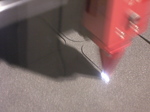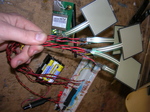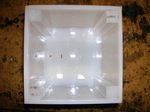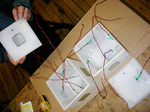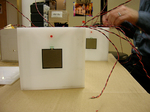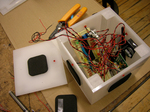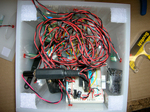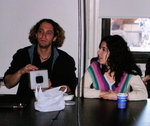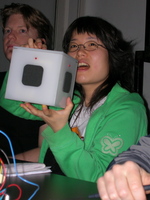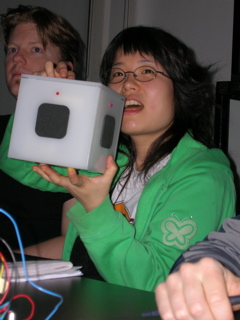
Christian and I presented the first version of the Wireless Cubes to our Network Objects class on Thursday. Each cube is a wireless node on the Internet. They use six force sensing resistors that PIC code sends over a WiFi connection to a server program that displays a 3D block-building procedure. Both cubes provide feedback about the building process as two users–each with their own Wireless Cube–take turns.
Each cube vibrates when it is that user’s turn to make a move. Sides that are blocked are marked by red LED lights, turned on wirelessly over the Internet by the server program. As the user presses on one of the foam-covered force sensors on the side, a piezo buzzer beeps to indicate that the selection has been made. We initially were going to cover the foam with a layer of plexiglass, but it was much more satisfying to push directly on the foam, so we opted for the better interface. The plexi solvent seemed nearly magical. It’s almost invisible when applied to a joint, yet welds within a minute or so. Our class passed the cubes around, playing the 3D game while receiving the active visual, audio and palpable motion feedback.
Here’s the initial drawing of the cube structure and some pictures of the cubes being built:

